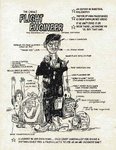FLYBOYJ
"THE GREAT GAZOO"
Both the "horizontal" and "vertical" cg components had to be maintained - 2 CGs - Just like on some helicopters. Check out page 20A of the P-39Q flight manual.I think I need a bit more info. As far as I know, there is only one cg point, which has three components, longitudinal (station line?), vertical (waterline?) and lateral, which every aircraft has. If you are saying that both the longitudinal and vertical cg components of the cg point must be closely maintained, I would understand, but I am confused about the two points.
Also with all this talk about the P-39 spinning, check out page 16, Paragraph 14, the first sentence!


